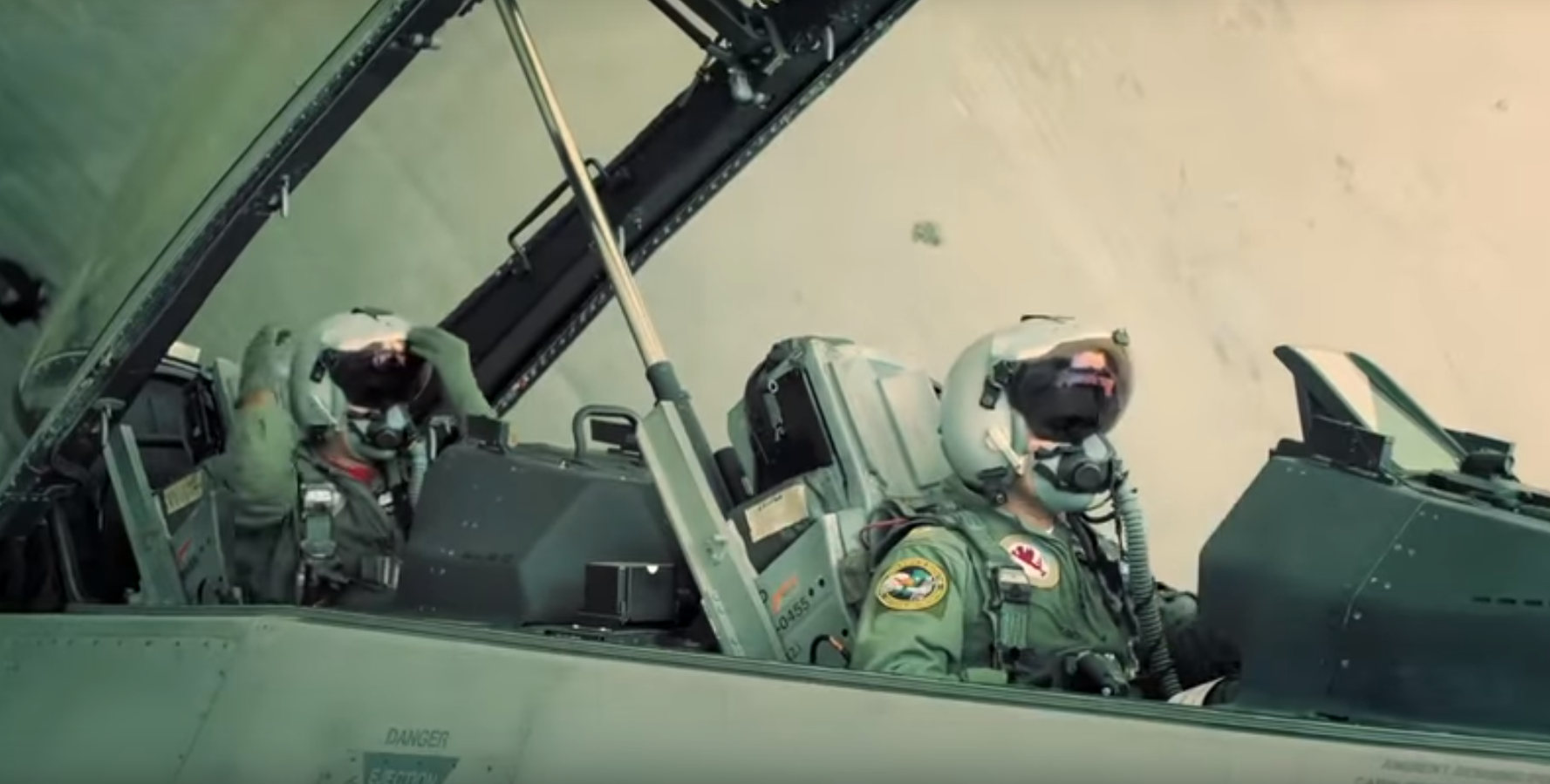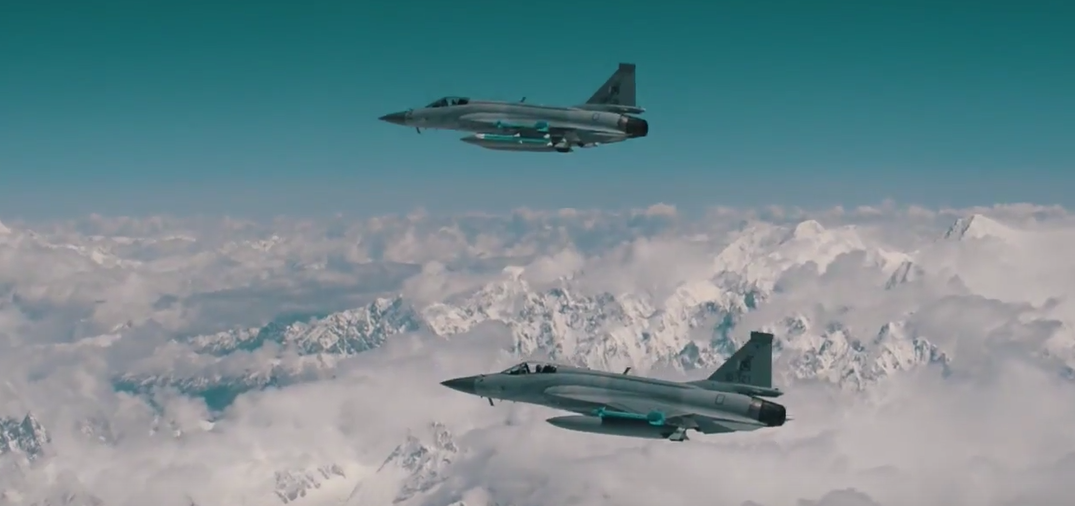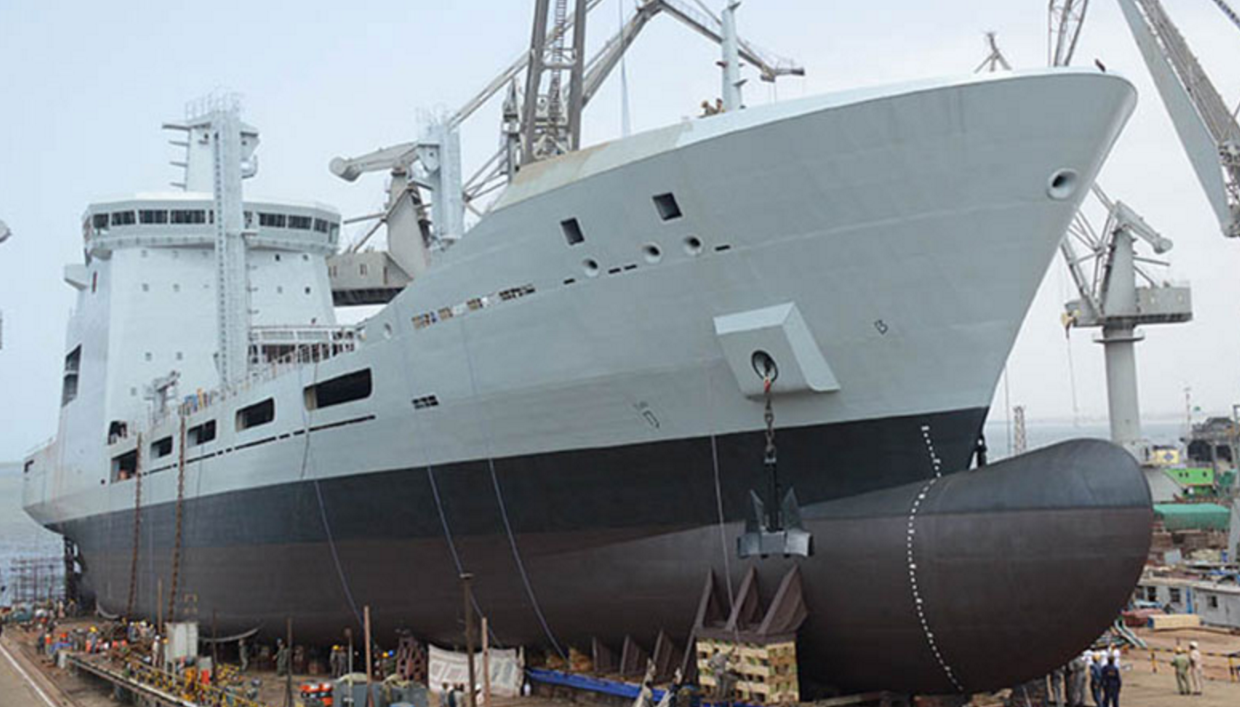2471Views 4Comments

Analysis: The process of acquiring HMD/S for the JF-17
Foreword: This is not a news story, but a purely analytical piece for the purpose of discussion. There is no official word of exactly what helmet-mounted display and sight system the Pakistan Air Force is selecting for the JF-17 Thunder.
Monday’s article outlined the purpose of helmet-mounted display and sight (HMD/S) systems, the value HMD/S hardware would provide to the JF-17 Thunder, and the challenges as well as considerations behind the decision of having HMD/S on the JF-17. Part-two will proceed with the discussion with the assumption, or to be accurate, the reality of the Pakistan Air Force (PAF) deciding that the JF-17 will be equipped with HMD/S (which is currently slotted to occur with the JF-17 Block-III).
An earlier article had attempted to examine various off-the-shelf HMD/S solutions that the PAF may have considered as viable options. However, not enough attention was given to the idea of a custom or bespoke HMD/S solution, especially in light of the apparent limitations the PAF could face in terms of sourcing off-the-shelf HMD/S products from, for example, Thales or BAE Systems.
As a starting point, it would be worth examining the HMD/S solutions that have been provided to the PAF. In the late 2000s and early 2010s, the Joint Helmet Mounted Cueing System (JHMCS) had entered service with the PAF’s F-16C/D Block-52+ and Mid-Life-Upgrade (MLU) F-16A/B. The JHMCS is ubiquitous and widely adopted solution with dozens of air arm users in the U.S., Canada, Australia, Western Europe, North Africa, the Middle East, and Asia. It is an essential component, one that customers tend to seek when pursuing U.S.-built combat aircraft, such as the Lockheed Martin F-16 and Boeing F-15 or F/A-18.
Although a widely adopted and proven system, the JHMCS is not the latest in HMD/S technology. While the JHMCS does benefit from digital processing and a markedly excellent level of modularity (whereby it is simply a set of components one can integrate onto standard-issue helmets such as the HGU-55/P), it is still dependent on Cathode Ray Tube (CRT) technology for displaying information to the pilot. In fact, a digital display version – i.e. JHMCS II – will be entering the market in the near-term as an optional upgrade for existing JHMCS users.
Given that the JHMCS is in use by three PAF fighter squadrons, it would be reasonable to assume that the PAF considers the JHMCS as a suitable benchmark of what the JF-17’s HMD/S ought to mirror. In terms of the system itself, i.e. fast digital processing, colour symbology, the ability to display a video feed (from a targeting or electro-optical pod) and, from a future-proofing perspective, a digital display (as opposed to CRT), the JHMCS series is a solid platform. The modularity aspect of the JHMCS, i.e. the fact that it can be integrated into an existing standard-issue helmet, such as the HGU-55/P (which the PAF uses), is a valuable – though ancillary – attribute as well.
Unfortunately for the PAF, the vendor that is intimately familiar with the JHMCS and whose development costs are diffused with immense – and global – scale is Elbit, an Israeli company. The JHMCS is a product of a joint venture known as Vision Systems International (VSI) between Elbit and the U.S. vendor Rockwell Collins. Besides this, Elbit markets two other strong HMD/S solutions, the Display and Sight Helmet System (DASH) and Targo, the latter marketed as a low-cost solution for trainers and utility aircraft. Elbit counts a number of major HMD/S customers, including India, which has configured the DASH onto the Tejas.
For Pakistan, this route is not possible. An alternative, but unlikely course, would be the rise of a third-party vendor (e.g. Denel Dynamics) to adopt the DASH and sell it to Pakistan. While seeing Denel Dynamics join others third-party vendors in re-packaging the DASH is not outlandish (especially since Denel Dynamics is marketing its own high off-boresight air-to-air missile), the notion of it gaining tacit approval from Israel to sell the system to Pakistan is not realistic. One plausible – but still hypothetical – scenario would be to see a vendor buy a system from Elbit along with the rights to freely re-market it.
China is a potential HMD/S source as well. However, the progress of its HMD/S development is not known at this time. In fact, while its high off-boresight (HOBS) air-to-air missile the PL-10 has been shown on the J-10 on numerous occasions, observers have yet to spot fighter-use HMD/S systems. However, China will certainly be developing a platform for its burgeoning number of advanced fighter platforms (including the next-generation J-20). Whatever concepts the People’s Liberation Army Air Force (PLAAF) and People’s Liberation Army Navy (PLAN) settle on, there is no doubting each service arm’s sheer scale and capacity to absorb development costs. This is not something Pakistan would be able to readily absorb alone.
However, if one is to imagine the PAF being convinced on the concepts it is familiar with – e.g. JHMCS – then it may have an incentive to push for HMD/S development autonomously. This would be an expensive route. For reference, Saab had committed $54 million U.S. to develop the Cobra HMD for its JAS-39C/D Gripen. The Cobra required input from Denel Optronics (now a part of Airbus Defence & Space) and BAE Systems. Thankfully, the technology required to develop an effective HMD/S solution is not as expensive today as it was 10 or 15 years ago (the technical expertise and infrastructure have expanded considerably, especially in the consumer industry). Vendors with the requisite competency and capacity can be tapped into to develop an HMD/S solution for the JF-17.
Given the PAF’s comparatively limited scale (in terms of the fighters it can possibly acquire), the development costs of the HMD/S will be distributed among a limited set of systems. This would result in higher priced HMD/S units, which in turn will raise the cost of the JF-17. On the other hand, the JF-17 will still be cheaper to acquire than anything else (especially in the West) with the same set of subsystems. If HMD/S is a vital component, then the added cost will be a non-factor. In fact, the added cost could be viewed as marginal if the benefit is in substantively raising the survivability and threat factor of the JF-17.
If Pakistan is cost-flexible, it could also present a reasonably strong case to vendors with existing HMD/S solutions, such as Thales and BAE. An overview of the TopOwl-F and Striker II in the context of the JF-17 can be found on Quwa. Should the PAF take up this route, then it will need to be aware of the costs these vendors may attach to lifecycle support. Some measure of technology transfer, especially in terms of local support, should be expected. If the PAF is particularly ambitious, it could try tying the procurement of the HMD/S with commercial offsets, which can be channeled into Pakistan’s private defence sector (which could rise as a vendor to provide long-term support to the PAF in this regard).



4 Comments
by Sami Shahid
Pakistan should and must install helmet-mounted display and sight (HMD/S) systems , AESA radar and Long-range targeting pods on JF-17 as Pakistan is not getting new F-16’s.
by sabutay1
Mr khan What you think about aselsan avcı hmds
by Bilal Khan - Quwa
That’s a helicopter HMD/S. We need one designed for fast jets and compatible with HOBS AAM and PGB cueing.
by Quraishi
I have read on arab media and sites that Morroco is purchasing jf 17s, any news on that.